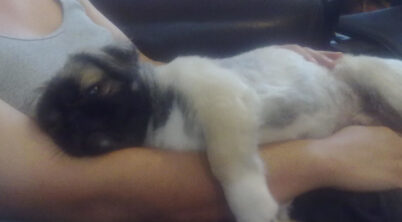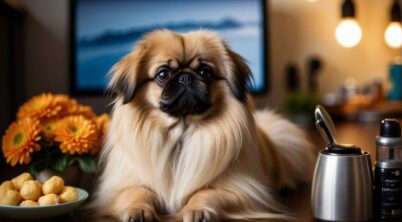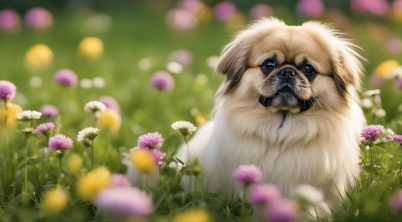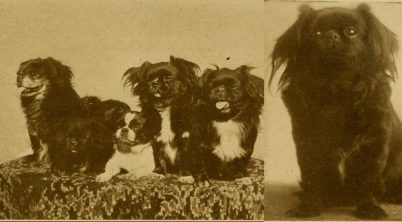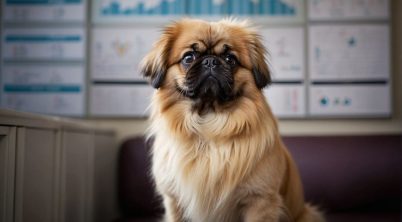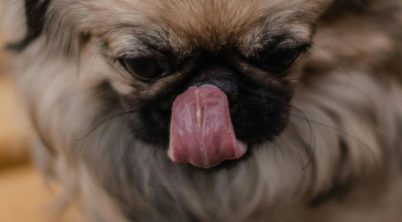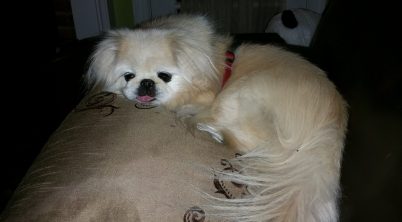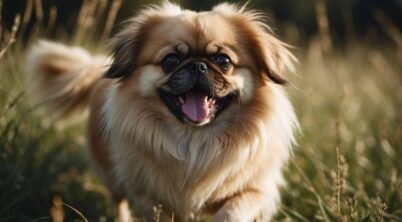The Pekingese breed, with its regal history as a favored companion of Chinese royalty, is a compact dog known for its loyalty and affectionate nature. As family pets, Pekingese are devoted and tend to form strong bonds with their human counterparts, making them highly valued for their companionship. They are characterized by a confident and even-tempered demeanor, attributes that are often sought after in a family dog.
In the dynamic setting of a family household, the Pekingese can thrive with the proper attention and socialization. However, their small size and particular grooming needs warrant consideration. The Pekingese’s long, luxurious coat requires regular maintenance to prevent matting, and their unique facial structure can lead to respiratory issues, so prospective owners should be prepared for these aspects of their care.
This breed’s loyalty and affectionate ways render them particularly sensitive to the needs and emotions of their family members. When adequately trained and socialized, the Pekingese can be a pleasant and loving addition to any home, welcoming of the interaction and intimacy that come with being part of a family unit. While their need for attention and care may be more demanding than some other breeds, the Pekingese’s unwavering companionship is often considered well worth the commitment.
Table of Contents
Is Pekingese a Good Family Dog?
The Pekingese breed is known for its affectionate and loving nature, making it a potentially good choice for families. However, these dogs are better suited to households with adults and older children due to their small size and tendency to require gentle handling.
Temperament:
- Confident: The Pekingese are confident in demeanor.
- Even-tempered: They usually maintain a balanced temperament.
- Loyal: They show strong loyalty to their family members.
Considerations:
| Factors | Details |
|---|---|
| Size | Compact and small, posing less risk of accidentally injuring a child. |
| Tolerance | Can tolerate older children, but may not be suitable for toddlers due to their own fragility and tendency towards nipping when provoked. |
| Attention | They demand significant attention and affection from their owners. |
Given that the Pekingese can become closely attached to one person, families should encourage shared responsibilities in care and interaction to foster a healthy bond between the dog and all family members.
Grooming:
- The Pekingese requires frequent grooming to avoid a matted coat.
- Occasional trimming around their hind end is necessary for hygiene.
In summary, the Pekingese can be a great companion for the right family. When considering this breed, one must keep in mind their grooming needs and compatibility with children. With appropriate care and socialization, the Pekingese can bring joy and charm to its human companions.
Historical Background
The Pekingese breed hails from the ancient celestial courts of China, originally kept as sacred guardians and companions for the Chinese royalty. Ancient China revered these dogs so much that it was once against the law for commoners to own one.
The dog’s regal bearing and lush mane give it the nickname “Lion Dog,” a reference to its supposed resemblance to Chinese guardian lions. This moniker reflects the breed’s esteemed place in Chinese culture and history, serving as a symbol of power and divinity.
During the Opium War in the mid-19th century, the breed caught the attention of the British when five Pekingese dogs were found and taken from the Yuanmingyuan, the Summer Palace, after it was looted in 1860. These dogs were brought back to England where they quickly became popular as companions among the British nobility, marking the spread of the Pekingese beyond China.
The Pekingese managed to preserve its mystique and charm as it transitioned from the palaces of Chinese emperors to family homes around the world. In modern times, the breed’s compact size and engaging personality have continued to endear it to dog lovers, making it an interesting choice for a family pet.
Physical Characteristics
The Pekingese boasts a distinctive appearance that reflects its regal origins in ancient China. It is a breed that carries itself with a certain dignity, marked by unique physical traits that set it apart as a toy dog of noble descent.
Appearance
The Pekingese has a lion-like mane that frames its face, emitting an air of confidence and pride. This breed’s coat comes in various colors, including tan, red, black, white, cream, and gray. They often have a thick coat that requires regular grooming to maintain its splendor. The breed’s overall look is stocky and compact with an alert expression that captures attention.
Size and Weight
The Pekingese is a small-sized dog with a characteristic stocky build. They typically have a height at the withers of about 6 to 9 inches (15 to 23 centimeters).
| Feature | Measurement |
|---|---|
| Height | 6-9 inches (15-23 cm) |
| Weight | 7-14 pounds (3-6 kg) |
Despite their small stature, Pekingese dogs have a solid and compact frame, weighing between 7 to 14 pounds (3 to 6 kilograms). Their body is more substantial than it might initially appear, considering their classification as a toy breed.
Behavioral Traits
The Pekingese is a breed with distinct behavioral traits that stem from its regal history. These traits can affect their roles and interactions within a family setting.
Temperament
The Pekingese possesses a temperament that often reflects its ancient lineage as a favored pet of Chinese royalty. With a blend of dignity and independence, they can sometimes display stubbornness, which may challenge training efforts. Regular, consistent training is necessary, and these dogs typically respond well to positive reinforcement. They have a moderate energy level, requiring daily exercise to maintain health and happiness, but do not require extensive physical activity. Their intelligence and alertness make them excellent watchdogs, as they will not hesitate to alert the family to unfamiliar occurrences or strangers.
Interactions with Family and Other Animals
When it comes to family interactions, Pekingese are known to be affectionate and loyal companions, often forming strong attachments to one person. Their friendly demeanor is more pronounced with family members than with strangers. Concerning children, care is necessary; the breed’s tolerance may vary, and they often do better with older children who understand how to interact with dogs respectfully. Regarding other animals, they can coexist peacefully with them, especially if they are raised together. However, their territorial nature means introductions need to be handled sensitively to prevent conflict.
Health and Grooming Needs
Pekingese dogs have specific requirements when it comes to their grooming and health maintenance. Proper attention to their distinctive coat and awareness of breed-specific health concerns are essential to ensure their well-being.
Maintenance Requirements
The Pekingese boasts a luxuriant double coat that requires regular maintenance to prevent matting. Owners should adhere to a regimen that includes:
- Daily brushing: To keep their coat shiny and free of tangles.
- Trimming: Occasional trimming around the dog’s hindquarters is necessary for cleanliness.
- Shedding: They are heavy shedders, so consistent grooming is key to managing the shedding of hair.
Beyond coat care, Pekingese need a balanced diet to maintain their health. Their nutrition must be closely monitored as they are prone to obesity.
Health Concerns
Pekingese are brachycephalic, meaning they have short noses, which makes them susceptible to breathing problems. They may also exhibit snoring due to this facial structure. Regular check-ups can help identify any potential issues early on.
While they do not require intense physical activity, daily exercise appropriate to their abilities is crucial to prevent weight gain and keep them healthy.
Owners should keep up with vaccinations and regular veterinary visits to monitor for common health problems prevalent in the breed, including eye issues and heart disorders.
Training and Socialization
In training and socializing a Pekingese, one must consider their intelligence and individualistic nature. A structured approach, emphasizing positive reinforcement, benefits their sensitive temperament while early socialization encourages good canine citizenship.
Training Techniques
The Pekingese breed is known for its intelligence but also for a strong-willed personality. This necessitates a training regimen that combines firmness with positive reinforcement. Reward-based methods using treats and praise effectively motivate them. It is critical that the trainer establishes themselves as a consistent leader to whom the Pekingese can look for direction. Techniques should include:
- Consistency: Clear and consistent commands are essential.
- Short Training Sessions: Keeps their attention and harnesses their capacity to learn.
- Patience: They may not respond to commands immediately but will with time.
Socialization Importance
Early socialization is pivotal for the Pekingese. Introducing a Pekingese puppy to various people, animals, and environments helps them to become well-adjusted adults. Social interactions should be positive, ensuring that the Pekingese feels secure and engaged. Since they can be independent, it is important to expose them to social scenarios early on to foster a social and friendly disposition. Key points include:
- Engaging with Other Dogs: Helps them understand canine behaviors.
- Meeting New People: Reduces fear or anxiety in unfamiliar situations.
- Exploring Different Environments: Prepares them for a variety of experiences.

